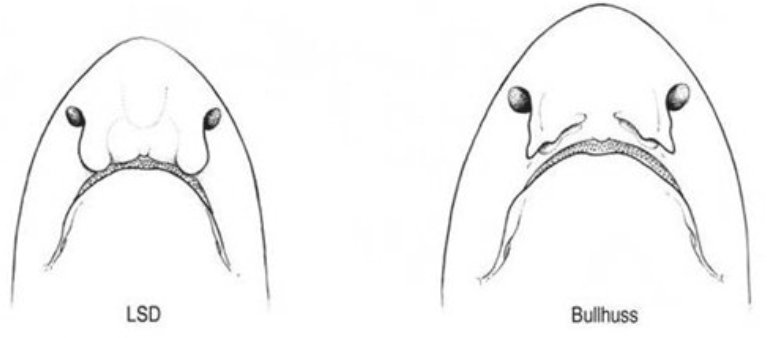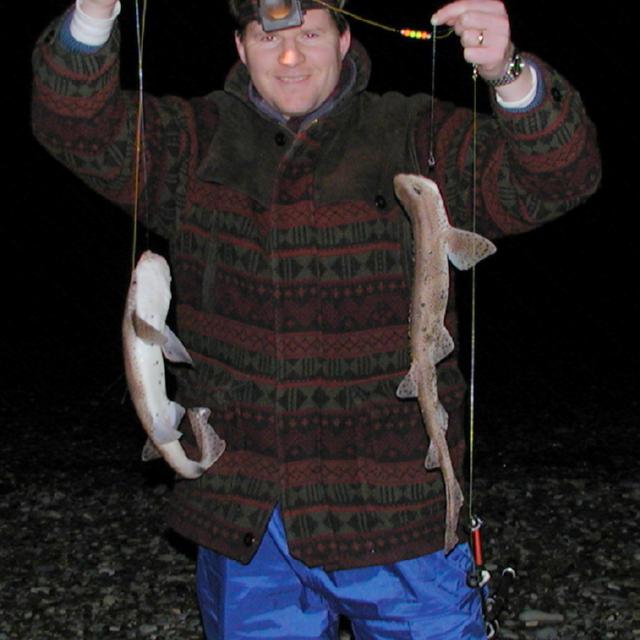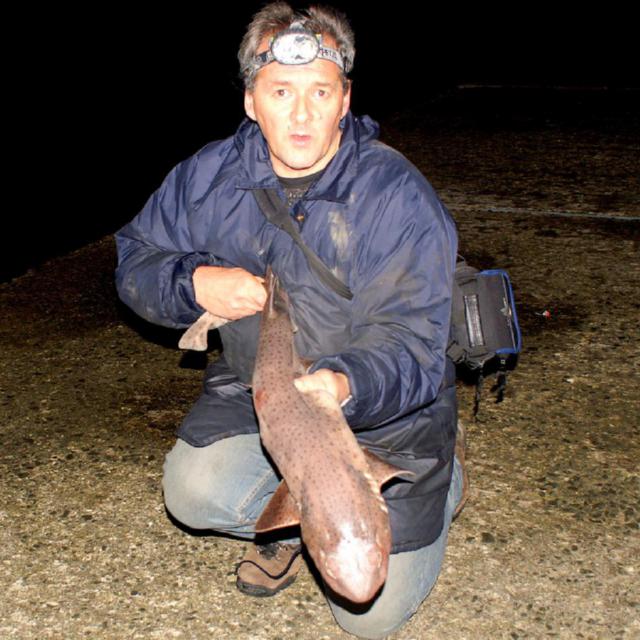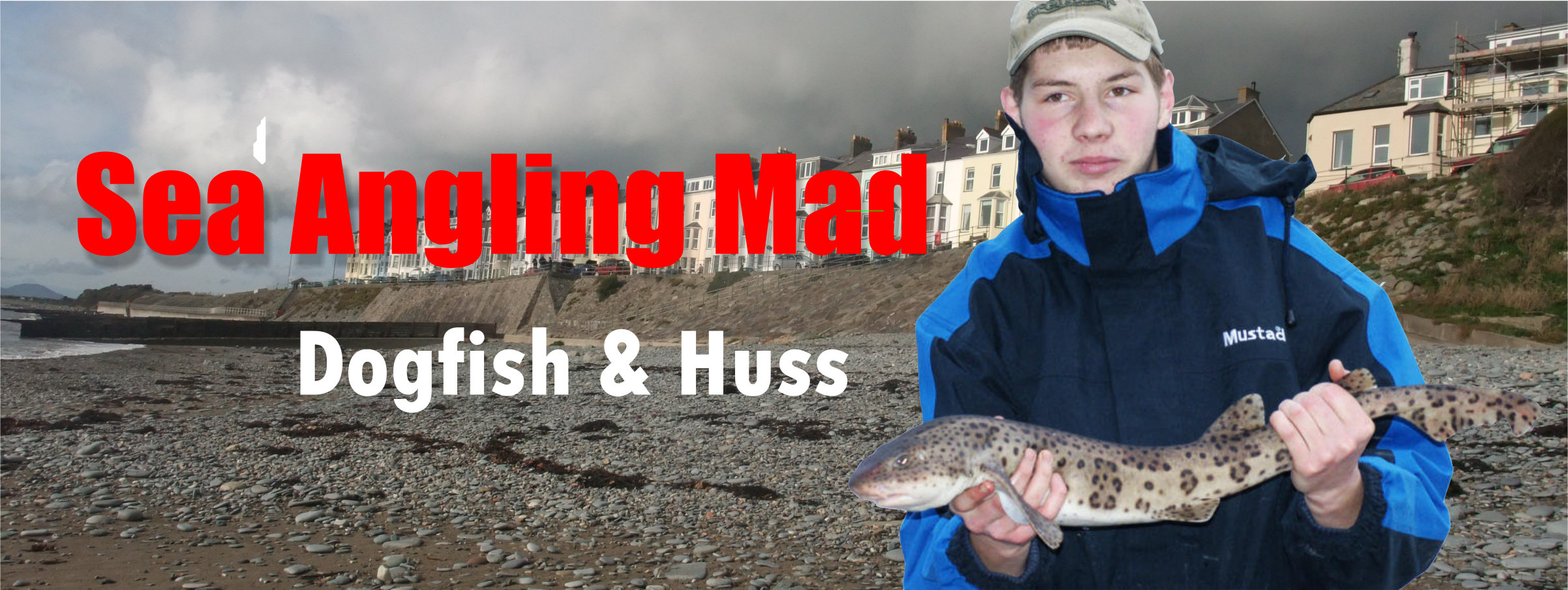
Huss & Dogfish
Last Updated October 2022
Dogfish
Dogfish are members of the shark family. They are widespread in UK waters but are not very tolerant of fresh water so don’t tend to be found in small estuaries.
They will take almost any bait but have a preference to fish baits, sand eel, mackerel, bluey and squid being the most productive. Dofish and Huss are most active during the hours of darkness. Baits fished on or close to and anchored with a grip lead are most productive. Both dogfish and huss are fish which hunt their food following scent trails rather than waiting for food to come to them.
They don’t seem to have a preference to one particular habitat and are just as abundant from clean beaches as from rock marks.
Don’t be afraid to fish larger hooks up to 5.0 for them as they are greedy feeders and tend to swallow smaller hooks deep down.
Lots of anglers used to mistreat ‘doggies’ considering them a nuisance bait robbing species especially when they take a bait intended for a more prized fish such as a bass.
Huss
Huss are very similar to dogfish and small huss and large dogfish can easily be confused with each other.
Huss generally have fewer and larger darker spots than dogfish. They also
Last Updated October 2022
Dogfish

Dogfish are members of the shark family. They are widespread in UK waters but are not very tolerant of fresh water so don’t tend to be found in small estuaries.
They will take almost any bait but have a preference to fish baits, sand eel, mackerel, bluey and squid being the most productive. Dofish and Huss are most active during the hours of darkness. Baits fished on or close to and anchored with a grip lead are most productive. Both dogfish and huss are fish which hunt their food following scent trails rather than waiting for food to come to them.
They don’t seem to have a preference to one particular habitat and are just as abundant from clean beaches as from rock marks.
Don’t be afraid to fish larger hooks up to 5.0 for them as they are greedy feeders and tend to swallow smaller hooks deep down.
Lots of anglers used to mistreat ‘doggies’ considering them a nuisance bait robbing species especially when they take a bait intended for a more prized fish such as a bass.
Huss
Huss are very similar to dogfish and small huss and large dogfish can easily be confused with each other.
Huss generally have fewer and larger darker spots than dogfish. They also
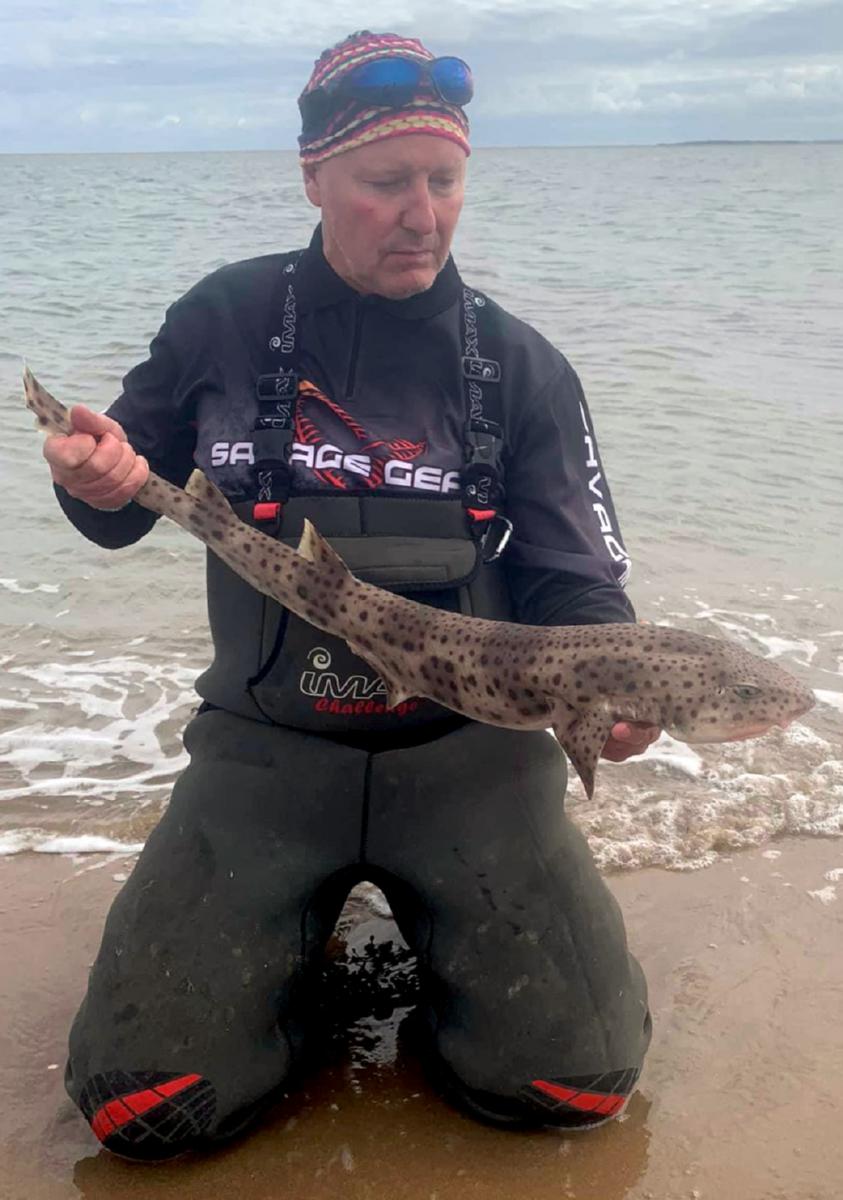
Peter Gabriel with a small huss from the shore
have a wider more rounded head and the nasal flaps on the huss are more pronounced and pointed than those of the dogfish.
While most dogfish caught are in the 1lb to 2lb range Huss are normally in the 4lb to 8lb range with bigger fish into low teens double figures.
They share a similar appetite to their small cousins and large sand eel or mackerel baits will be successful.
Like dogfish they are best sought after darkness and can be caught at all states of the tide.
Both dogfish and huss can be caught from April through to late January, but the best months for Huss are September through to late November when the whiting shoals are at a peak.
Best marks for Huss are close to rough patches of boulders or rocks or from rock marks.
The fish will venture onto clean patches of ground but never too far from the rough stuff.
Both dogfish and huss have a very rough skin which can easily remove skin not handled carefully.
Huss unlike the dogfish have a fairly impressive array of teeth. Keep fingers out of the way when unhooking them and use a pair of pliers.
The profile of a dogfish left and a huss right showing the difference in the shape of the snouts. Notice the difference between the nasal flaps. A dogfish has more rounded nasal flaps compared to the very angular ones of the huss.
While most dogfish caught are in the 1lb to 2lb range Huss are normally in the 4lb to 8lb range with bigger fish into low teens double figures.
They share a similar appetite to their small cousins and large sand eel or mackerel baits will be successful.
Like dogfish they are best sought after darkness and can be caught at all states of the tide.
Both dogfish and huss can be caught from April through to late January, but the best months for Huss are September through to late November when the whiting shoals are at a peak.
Best marks for Huss are close to rough patches of boulders or rocks or from rock marks.
The fish will venture onto clean patches of ground but never too far from the rough stuff.
Both dogfish and huss have a very rough skin which can easily remove skin not handled carefully.
Huss unlike the dogfish have a fairly impressive array of teeth. Keep fingers out of the way when unhooking them and use a pair of pliers.
The profile of a dogfish left and a huss right showing the difference in the shape of the snouts. Notice the difference between the nasal flaps. A dogfish has more rounded nasal flaps compared to the very angular ones of the huss.
